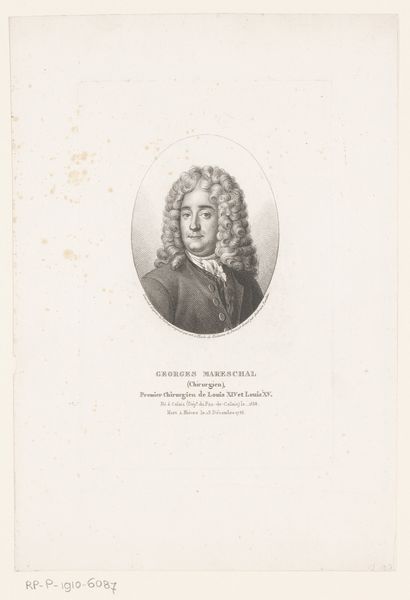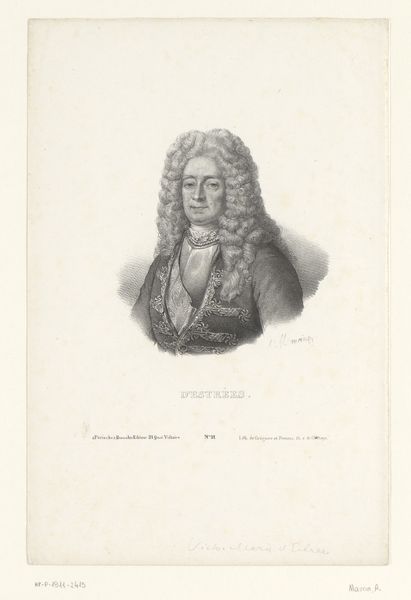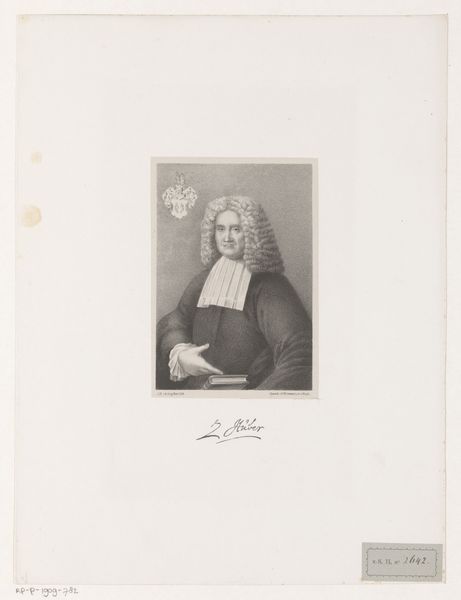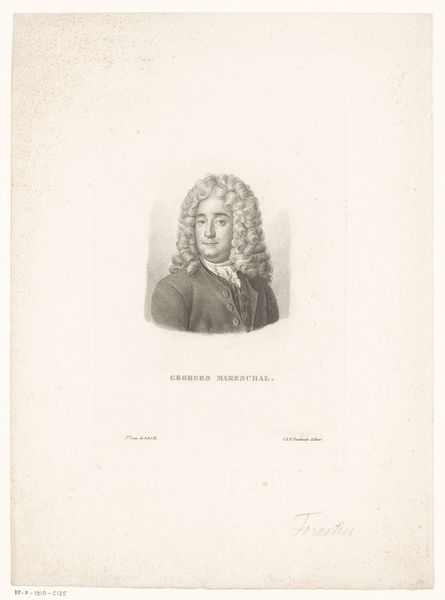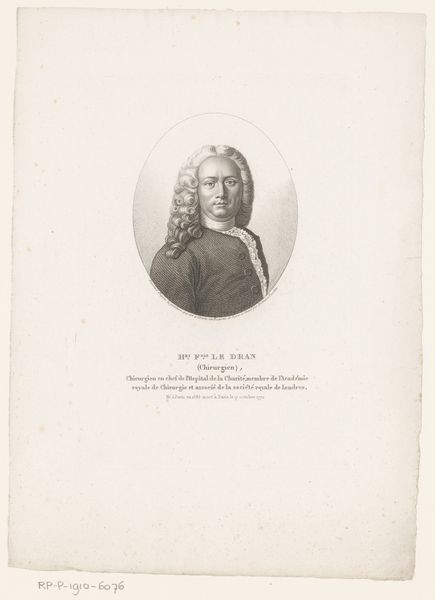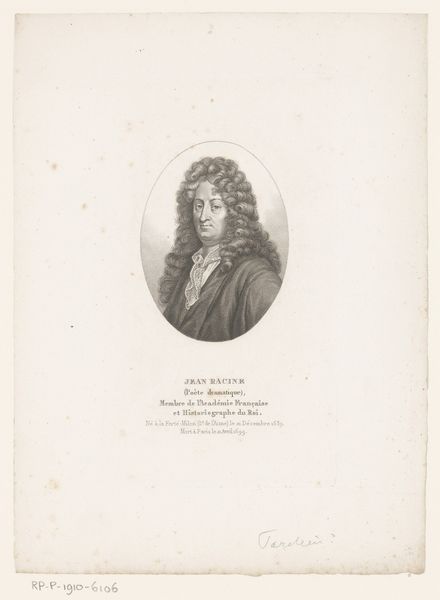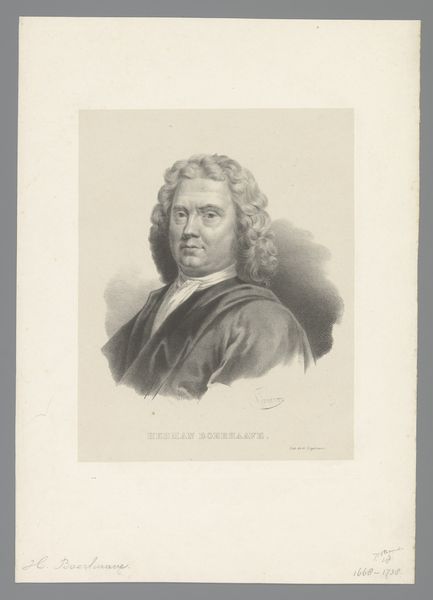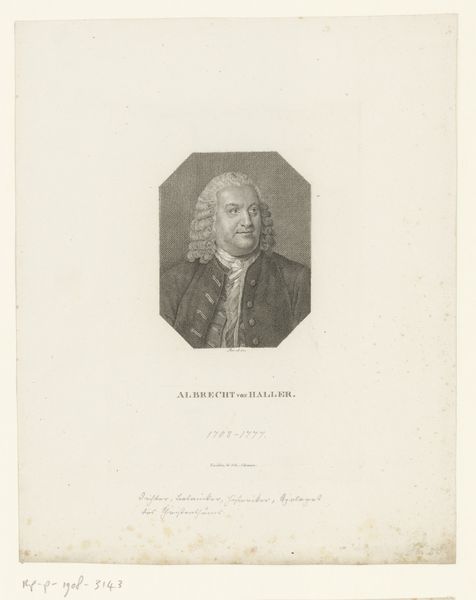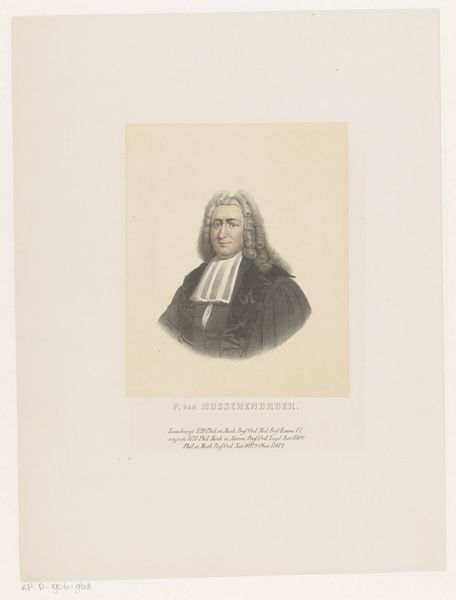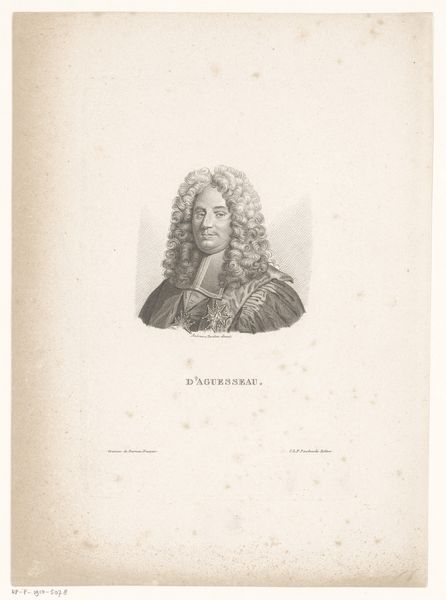
Dimensions: height 333 mm, width 255 mm
Copyright: Rijks Museum: Open Domain
Curator: This is "Portret van Jacques Saurin," a drawing crafted with pencil and graphite on paper, dating from 1842 to 1887. It resides here at the Rijksmuseum. Editor: My first impression is… subdued. The delicate shading gives a gentle quality to the figure, but his gaze feels quite intense, almost piercing through the page. There's a vulnerability, too, in the soft lines that trace his face. Curator: The portrait adheres to both the Romantic and Realist movements that shaped 19th-century art. This reflects a time fascinated by representations of self and interiority but still beholden to accurately capturing physical appearance. Saurin was a significant figure. Editor: Right, and looking at the way he’s dressed in that distinctive clerical collar and gown, it is quite clear that he occupies some position within the church; this adds context to this work as a social object. Were portraits like this displayed publicly at the time? Curator: Often portraits like this would have served a dual purpose. Certainly, private contemplation and remembrance for family members were a major purpose. But, more largely, works such as these cemented a kind of social standing of the subject as the likenesses of prominent figures reinforced a cultural framework around individual excellence. Editor: Absolutely, and it's fascinating to consider how artistic representation, like this drawing, plays a part in perpetuating societal hierarchies. The level of detail afforded to Jacques hair, his status is subtly yet irrevocably broadcast by this rendering. What power dynamics were at play in its creation, in his decision to immortalize his visage. Curator: And of course, how the social value ascribed to the portrait has evolved to reach our moment. We're able to examine both the artistry and the broader cultural values it embodies. It's a remarkable testament to the complex intersections between individual identity and collective history. Editor: Indeed, artworks like "Portret van Jacques Saurin" compel us to think about not just art history, but also our place within the grand, ongoing narrative of culture and identity. I will be taking these things into consideration moving forward!
Comments
No comments
Be the first to comment and join the conversation on the ultimate creative platform.

